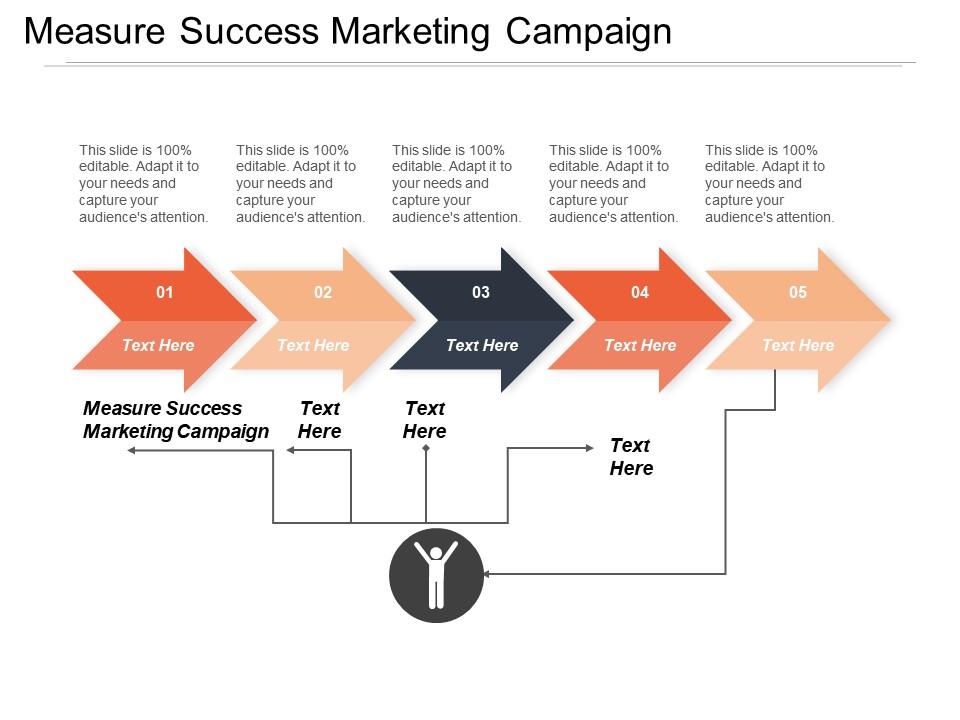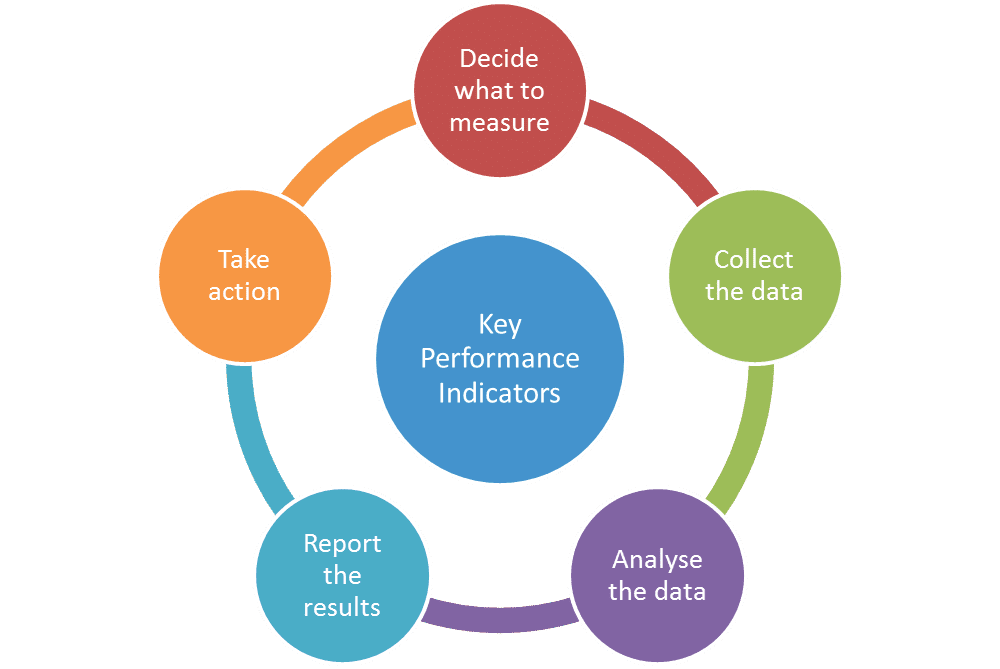How to Measure Success Marketing: Key Metrics Unveiled
To measure marketing success, track key performance indicators (KPIs) and metrics to evaluate campaign effectiveness. Analyze data regularly to optimize strategies for better results.
Marketing success is crucial for businesses to thrive in today’s competitive landscape. Understanding how to measure the effectiveness of marketing efforts is essential for making informed decisions and achieving desired outcomes. By tracking KPIs such as conversion rates, customer acquisition cost, and return on investment, businesses can gauge the performance of their marketing campaigns.
This data-driven approach allows organizations to identify areas for improvement, capitalize on successful strategies, and ultimately drive growth and profitability. We will explore various methods and tools for measuring marketing success and provide valuable insights for optimizing your marketing efforts.
Introduction To Marketing Success
Discover the key to Marketing Success by mastering the art of measuring marketing efforts. Learn effective strategies to gauge success and optimize your marketing campaigns for maximum impact. Track, analyze, and adapt your approach to achieve remarkable results in the competitive world of marketing.
The Importance Of Measuring Success
Marketing success is critical for any business looking to grow and succeed in today’s competitive market. Measuring success is the first step towards optimizing marketing strategies and achieving business goals. Measuring success helps businesses identify what works and what doesn’t work, enabling them to make informed decisions and allocate resources appropriately. By measuring success, businesses can determine which channels and tactics are driving results and which ones need improvement.
Common Challenges In Evaluating Marketing Effectiveness
Measuring marketing effectiveness is not always straightforward. Many businesses struggle to understand what metrics to track and how to measure them accurately. Some of the common challenges businesses face when evaluating marketing effectiveness include:
- Difficulty in attributing sales to specific marketing channels
- Lack of clarity on which metrics to track
- Difficulty in measuring the impact of brand awareness campaigns
- Insufficient data or inadequate tools for measuring success
- Difficulty in measuring the impact of offline marketing efforts
Ensuring that businesses overcome these challenges is essential to measuring marketing success accurately. By addressing these challenges, businesses can gain a better understanding of their marketing effectiveness and optimize their marketing strategies accordingly.
In conclusion, measuring marketing success is critical for businesses looking to grow and succeed. By understanding the importance of measuring success and addressing common challenges, businesses can ensure that they are making informed decisions and allocating resources appropriately.

Credit: www.earlybirdstrategy.com
Setting The Right Goals
Setting the Right Goals is crucial for measuring marketing success. It involves identifying business objectives and aligning marketing goals with the overall business strategy. By setting the right goals, businesses can effectively track their marketing efforts and ensure that they are contributing to the company’s growth and success.
Identifying Business Objectives
Before setting marketing goals, it’s essential to identify the core objectives of the business. This involves understanding the company’s mission, vision, and long-term goals. By clearly defining the business objectives, marketers can tailor their strategies to support these objectives and ensure that their efforts are contributing to the overall success of the company.
Aligning Marketing Goals With Business Strategy
Once the business objectives are clear, it’s important to align the marketing goals with the overall business strategy. This alignment ensures that the marketing efforts are directly contributing to the success of the business. By closely aligning marketing goals with the broader business strategy, companies can ensure that their marketing activities are focused and impactful.
Core Marketing Metrics To Track
To effectively measure marketing success, it’s crucial to track core metrics such as customer acquisition cost, return on investment, and conversion rates. These metrics provide valuable insights into the effectiveness of marketing efforts and help in making data-driven decisions to optimize strategies for better results.
Core Marketing Metrics to Track
When it comes to measuring the success of your marketing efforts, it is crucial to focus on core marketing metrics that provide valuable insights into the performance of your campaigns. Tracking these metrics can help you make informed decisions and optimize your strategies for better results.
Traffic sources and volumes
Understanding the sources of your website traffic and the volumes from each source is essential for evaluating the effectiveness of your marketing efforts. By tracking the traffic sources, you can identify which channels are driving the most visitors to your site. Whether it’s organic search, paid advertising, social media, or referrals, knowing where your traffic is coming from enables you to allocate resources effectively.
Conversion rates and their significance
Measuring conversion rates is paramount in determining how effectively your marketing efforts are turning visitors into leads or customers. A high conversion rate indicates that your messaging and offers are resonating with your audience, while a low conversion rate may signal the need for optimization. Tracking conversion rates across different channels and campaigns provides valuable insights into the effectiveness of your marketing initiatives.
Cost per acquisition (CPA) and its impact
Calculating the cost per acquisition (CPA) allows you to evaluate the efficiency of your marketing spend in acquiring new customers or leads. By dividing the total cost of a campaign by the number of acquisitions, you can determine the cost-effectiveness of your marketing efforts. Monitoring CPA helps you allocate your budget more efficiently and optimize your campaigns for better ROI.
In conclusion, measuring core marketing metrics such as traffic sources and volumes, conversion rates, and cost per acquisition is critical for evaluating the success of your marketing efforts. By tracking and analyzing these key metrics, you can make data-driven decisions and continuously improve your marketing strategies for optimal results.
The Role Of Engagement Metrics
The Role of Engagement Metrics is crucial in measuring the success of your marketing efforts. By analyzing engagement metrics, you can gain valuable insights into how your target audience is interacting with your brand across various channels. This data enables you to make informed decisions and optimize your marketing strategies for better results.
Understanding Engagement On Social Media
Social media platforms provide a wealth of engagement metrics that can help you gauge the effectiveness of your marketing campaigns. By monitoring metrics such as likes, comments, shares, and followers, you can assess the level of audience engagement with your content. These metrics provide valuable feedback on the resonance of your messaging and the impact it has on your target audience.
Email Marketing Metrics For Success
Email marketing remains a powerful tool for engaging with your audience. To measure the success of your email campaigns, you can analyze metrics such as open rate, click-through rate, and conversion rate. These metrics provide insights into the effectiveness of your subject lines, content, and call-to-actions. By continuously monitoring and optimizing these metrics, you can enhance the performance of your email marketing efforts.
Website Engagement And User Behavior
Understanding how users engage with your website is critical for measuring marketing success. Metrics such as bounce rate, time on page, and pages per session can help you gauge the level of user engagement. Additionally, tracking user behavior through heatmaps and click-through rates can provide insights into how visitors navigate your website and interact with your content. By analyzing these metrics, you can identify areas for improvement and optimize your website for better user engagement.
By focusing on engagement metrics across social media, email marketing, and website user behavior, you can gain valuable insights into the success of your marketing efforts. These metrics allow you to make data-driven decisions and refine your strategies to achieve better results. Remember, consistently monitoring and optimizing these metrics is key to driving continuous improvement and maximizing the impact of your marketing campaigns.
Analyzing Customer Lifetime Value (clv)
Understanding customer lifetime value (CLV) is crucial for measuring the success of your marketing efforts. CLV is the projected revenue a customer will generate throughout their relationship with your business. By analyzing CLV, you can gain valuable insights into customer behavior, identify the most profitable segments, and make informed decisions to enhance your marketing strategies.
Calculating Clv
Calculating CLV requires a comprehensive approach that takes into account various factors. The simplest way to calculate CLV is by using the following formula:
CLV = Average Purchase Value × Purchase Frequency × Customer Lifespan
Let’s break down each component:
- Average Purchase Value: This represents the average amount of money a customer spends on each purchase. To calculate this, divide your total revenue by the number of purchases made within a specific period.
- Purchase Frequency: This refers to how often a customer makes a purchase from your business. To calculate this, divide the total number of purchases by the number of unique customers within a specific period.
- Customer Lifespan: This represents the average duration of the customer-business relationship. To calculate this, divide the sum of all customer lifespans by the number of unique customers.
By plugging in the values for these components, you can determine the CLV for your business. This metric provides a clear picture of the value each customer brings to your bottom line.
Strategies To Enhance Clv
Once you have calculated your CLV, the next step is to find strategies to enhance it. Here are some effective strategies to consider:
- Focus on customer retention: Building long-term relationships with your customers is key to increasing CLV. Implement loyalty programs, personalized offers, and excellent customer service to keep customers coming back.
- Upsell and cross-sell: Encourage customers to spend more by offering relevant upsell and cross-sell opportunities. Recommend complementary products or higher-tier options to increase their average purchase value.
- Improve customer experience: A positive customer experience can significantly impact CLV. Enhance your website’s usability, streamline the purchasing process, and provide exceptional post-purchase support to keep customers satisfied.
- Segment your customers: Identify your most valuable customer segments and tailor your marketing efforts accordingly. By understanding their specific needs and preferences, you can deliver more targeted and personalized experiences.
- Invest in customer loyalty: Reward loyal customers with exclusive discounts, early access to new products, or special perks. By showing appreciation for their continued support, you can foster loyalty and increase their lifetime value.
By implementing these strategies, you can optimize your CLV and maximize the value each customer brings to your business. Remember, analyzing and enhancing CLV is an ongoing process that requires continuous monitoring and adjustments to ensure long-term success.
Roi: The Ultimate Measure
When it comes to measuring marketing success, Return on Investment (ROI) stands out as the ultimate measure. Calculating marketing ROI is essential for businesses to determine the effectiveness of their marketing efforts and ensure that every dollar spent generates a positive return.
Calculating Marketing Roi
Calculating marketing ROI involves comparing the gains from marketing investments to the cost of those investments. The formula for calculating ROI is: ROI = (Net Profit / Marketing Costs) x 100. This simple yet powerful metric allows businesses to assess the profitability of their marketing campaigns and make informed decisions about resource allocation.
Improving Roi Through Strategic Decisions
Improving ROI requires strategic decision-making. By analyzing the factors that influence ROI, such as customer acquisition cost, customer lifetime value, and conversion rates, businesses can identify opportunities to enhance their ROI. This may involve optimizing marketing channels, refining targeting strategies, or reallocating resources to high-performing campaigns.
Leveraging Analytics Tools
Top Tools For Marketing Measurement
Google Analytics, SEMrush, HubSpot, and Ahrefs are essential for measurement.
Integrating Tools For A Comprehensive View
Combine data from various tools for a holistic perspective on marketing success.
Case Studies: Success Stories
Real-world Examples Of Successful Campaigns
One compelling case study is Company X’s social media campaign.
Another success story is the email marketing campaign by Company Y.
| Company | Marketing Channel | Success Metric |
|---|---|---|
| Company X | Social Media | Increased engagement by 40% |
| Company Y | Email Marketing | Boosted conversion rate by 25% |
Lessons Learned And Best Practices
- Consistent branding across all channels is crucial.
- Personalized messaging resonates with the audience.
- Regular performance analysis leads to optimization.
function personalizeContent(user) {
return `Hello ${user.name}, check out our latest offers!`;
}
Success stories from real-world examples provide valuable insights.
Conclusion: Continuous Improvement
Continuous improvement is essential in marketing to drive ongoing success.
The Importance Of Adaptability In Marketing
Adaptability in marketing ensures staying relevant and responsive.
Future Trends In Marketing Measurement
Future trends in marketing measurement include advanced analytics and AI.

Credit: www.slideteam.net

Credit: salespanel.io
Frequently Asked Questions
What Are The Key Performance Indicators (kpis) Used To Measure Marketing Success?
To measure marketing success, KPIs such as website traffic, conversion rates, customer acquisition cost, and customer retention rate are commonly used. These metrics provide insights into the effectiveness of marketing strategies and help businesses make informed decisions.
How Do You Determine The Roi Of A Marketing Campaign?
To determine the ROI of a marketing campaign, calculate the total revenue generated by the campaign and subtract the total cost of the campaign. Then, divide the result by the total cost of the campaign and multiply by 100 to get the percentage ROI.
This helps businesses gauge the effectiveness of their marketing efforts.
Why Is It Important To Track Customer Behavior?
Tracking customer behavior helps businesses understand their customers’ preferences, needs, and pain points. This information can be used to create targeted marketing campaigns, improve product offerings, and enhance the overall customer experience. It also helps businesses identify areas of opportunity for growth.
Conclusion
Measuring success in marketing is a crucial aspect of any business strategy. By focusing on key metrics such as ROI, conversion rates, and customer satisfaction, businesses can gain valuable insights into the effectiveness of their marketing efforts. Additionally, utilizing tools like Google Analytics and social media analytics can provide a comprehensive view of marketing performance.
Ultimately, a data-driven approach to measuring success allows businesses to make informed decisions, optimize campaigns, and drive growth.
Hi there very nice website!! Man .. Beautiful .. Wonderful .. I will bookmark your website and take the feeds also…I’m glad to seek out numerous useful information right here within the post, we need develop extra techniques on this regard, thank you for sharing.